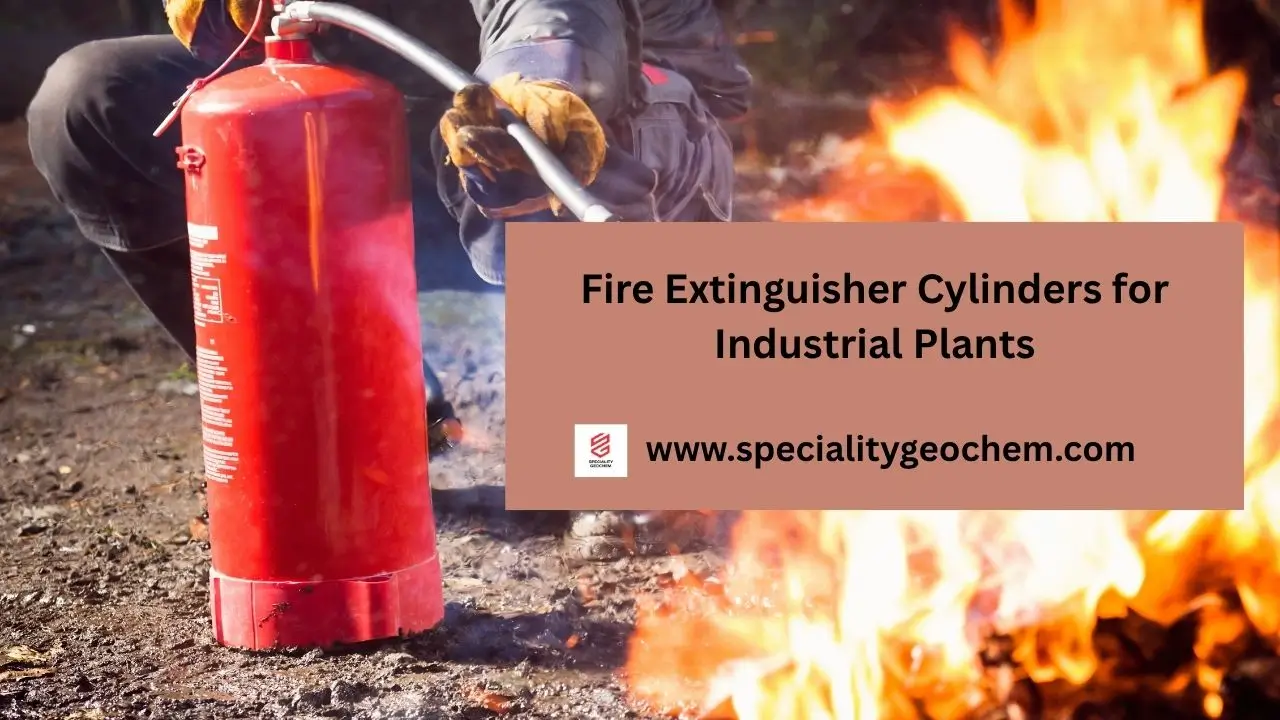In industrial environments, safety is not a luxury—it’s a necessity. Factories, power plants, and manufacturing facilities operate with high temperatures, electrical machinery, and flammable substances, all of which create potential fire hazards. To mitigate these risks, Fire Extinguisher Cylinders for Industrial Plants play an indispensable role. These cylinders are not just fire safety equipment; they are the first line of defense against potentially catastrophic incidents.
Understanding the Role of Fire Extinguisher Cylinders
Industrial plants are dynamic spaces where even a small spark can cause massive losses. Fire Extinguisher Cylinders for Industrial Plants are designed to handle diverse classes of fires—Class A (solid materials like wood and paper), Class B (flammable liquids), Class C (gaseous fires), and Class E (electrical fires).
The key to effective fire suppression lies in choosing the right type of extinguisher. Whether it’s a dry chemical powder, CO₂, or water-based system, each type of cylinder is engineered to target specific fire sources and prevent re-ignition. In industrial settings, this precision is crucial because different departments may face unique risks—chemical storage areas differ from welding sections or electrical control rooms.
Types of Fire Extinguisher Cylinders Used in Industries
Industrial facilities require specialized extinguishers to combat various fire threats. Here are the most common types:
1. Dry Chemical Powder (DCP) Cylinders
DCP extinguishers are among the most versatile and widely used Fire Extinguisher Cylinders for Industrial Plants. They can handle Class A, B, and C fires effectively. The powder works by interrupting the chemical reaction of combustion and creating a barrier between oxygen and fuel.
These are ideal for areas such as welding units, paint booths, and machinery workshops.
2. Carbon Dioxide (CO₂) Cylinders
CO₂ extinguishers are perfect for electrical and electronic equipment areas. They work by displacing oxygen and cooling the flames, leaving no residue. CO₂ cylinders are essential in control rooms, laboratories, and data centers within industrial plants.
3. Water and Foam Cylinders
Water and foam extinguishers are typically used for Class A fires involving paper, wood, and textiles. However, foam cylinders can also tackle flammable liquid fires by creating a film that cuts off the oxygen supply.
4. Clean Agent Cylinders
These modern extinguishers use environmentally friendly gases that leave no residue and are safe for sensitive equipment. They are suitable for industries where both safety and cleanliness are priorities, such as electronics or pharmaceutical manufacturing.
5. Automatic Fire Suppression Systems
Many industrial facilities are now adopting automatic suppression systems that activate without human intervention. These systems use pressurized Fire Extinguisher Cylinders for Industrial Plants equipped with detection tubes that burst upon contact with high heat, releasing the extinguishing agent instantly.
Safety Standards and Compliance Requirements
Fire safety in industrial plants is regulated by national and international standards to ensure reliability and effectiveness. Some of the key standards include:
- IS 2190:2010 – Indian Standard for selection, installation, and maintenance of portable fire extinguishers.
- NFPA (National Fire Protection Association) codes – globally recognized standards for fire protection systems.
- OSHA (Occupational Safety and Health Administration) regulations – applicable for industries following international safety norms.
- Factory Act, 1948 (India) – mandates employers to install adequate firefighting equipment and conduct regular safety drills.
Compliance with these standards ensures that the Fire Extinguisher Cylinders for Industrial Plants are approved, tested, and maintained as per prescribed norms. It also provides assurance that employees can rely on them in emergencies.
Installation and Placement Guidelines
Proper installation is as important as choosing the right extinguisher. Here are some recommended practices:
- Accessibility: Install extinguishers at easily visible and reachable locations, ideally near exits and escape routes.
- Height: Mount portable extinguishers so that their handles are about 1 meter from the floor for easy access.
- Signage: Clearly mark all fire extinguisher locations using luminescent signage.
- Zoning: Place extinguishers according to fire zones—chemical zones, electrical areas, storage units, etc.
Professional installation ensures correct pressure calibration and positioning, minimizing response time during a fire outbreak.
Maintenance and Inspection Checklist
Regular maintenance of Fire Extinguisher Cylinders for Industrial Plants is vital to ensure they remain functional. As per safety standards:
- Monthly Inspection: Check for physical damage, leakage, and pressure gauge readings.
- Annual Servicing: Engage certified professionals to inspect valves, seals, and discharge nozzles.
- Hydrostatic Testing: Every 3–5 years, depending on the extinguisher type, to test the cylinder’s strength and durability.
- Refilling and Replacement: Ensure extinguishers are refilled immediately after use, even partially.
Neglecting maintenance could lead to malfunction when it’s needed most, potentially resulting in loss of property and lives.
Employee Training and Fire Drills
Even the best equipment is useless without trained personnel. Regular fire safety training and mock drills teach employees how to identify fire classes, select appropriate extinguishers, and operate them safely.
Training should include:
- Pull, Aim, Squeeze, and Sweep (PASS) technique.
- Evacuation procedures and assembly points.
- Emergency contact protocols.
When employees know exactly what to do, they can act quickly, reducing both panic and damage during real incidents.
Modern Innovations in Industrial Fire Safety
Today, Fire Extinguisher Cylinders for Industrial Plants are evolving with new technology. Some innovations include:
- Smart Extinguisher Systems: Sensors detect abnormal heat or smoke and trigger extinguishers automatically.
- Non-Toxic, Eco-Friendly Agents: Advanced formulations minimize environmental impact.
- Integrated Safety Alarms: Systems that connect to central control units to alert supervisors instantly during activation.
Such innovations reflect the industry’s shift toward sustainable and intelligent fire protection.
Conclusion
Industrial safety begins with preparedness, and Fire Extinguisher Cylinders for Industrial Plants are a fundamental part of that defense. From manufacturing units to chemical processing plants, these devices safeguard valuable assets, protect lives, and ensure regulatory compliance.
At Speciality Geochem, we understand that fire safety is not just about meeting standards—it’s about saving lives and maintaining trust. Our advanced range of fire extinguisher cylinders is designed for durability, performance, and reliability under the toughest conditions.
Fire incidents can happen anytime, but with the right equipment, awareness, and training, industries can minimize risks and operate with confidence. Remember: prevention is protection—equip your plant with certified fire extinguisher cylinders and keep safety your top priority.

